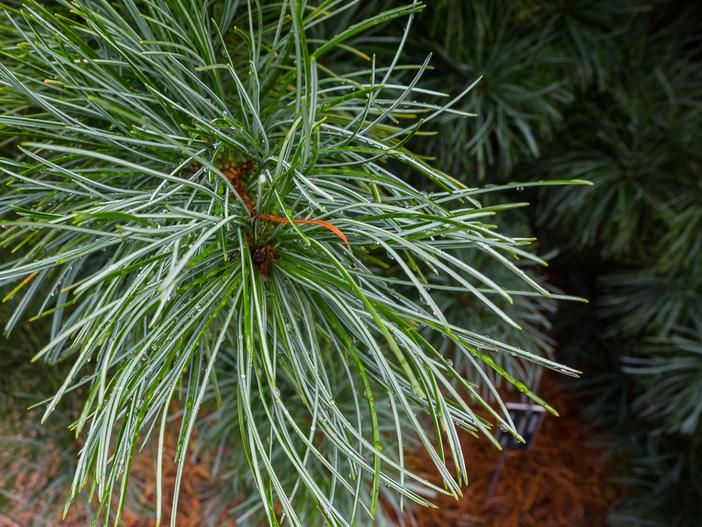Korean Pine
(Pinus koraiensis)
Korean Pine (Pinus koraiensis)
/
/

F. D. Richards
CC BY-SA 2.0



















































Estimated Native Range
Summary
Korean Pine is valued for its adaptability to various soil types and its ability to withstand urban pollution, making it a suitable choice for urban planting. It is also used as a specimen tree in large gardens and parks, appreciated for its stately form and the ornamental quality of its cones. The tree’s ability to thrive in cold climates with harsh winters adds to its horticultural appeal. Cultivars like ’Glauca’ with blue-tinged needles and ’Silveray’ and ’Winton’ with unique forms expand the ornamental use of this species. Korean Pine requires full sun for optimal growth and benefits from medium water availability and well-drained soils. While generally disease-resistant, it can be susceptible to pine wilt disease caused by the pinewood nematode, especially in warmer climates where the nematode is prevalent.CC BY-SA 4.0
Plant Description
- Plant Type: Tree
- Height: 30-50 feet
- Width: 15-20 feet
- Growth Rate: Rapid
- Flower Color: N/A
- Flowering Season: Non-Flowering
- Leaf Retention: Evergreen
Growth Requirements
- Sun: Full Sun
- Water: Medium
- Drainage: Medium, Fast
Common Uses
Bank Stabilization, Bird Garden, Border Plant, Butterfly Garden, Deer Resistant, Drought Tolerant, Edible*Disclaimer: Easyscape's listed plant edibility is for informational use. Always verify the safety and proper identification of any plant before consumption., Fragrant, Low Maintenance, Potted Plant, Rabbit Resistant, Rock Garden, Salt Tolerant
Natural Habitat
Mountainous regions and mixed forests of East Asia
Other Names
Common Names: Korean White Pine, Korean Nut Pine, Fruit Pine, Chinese Pinenut, Korea-Kiefer, Pin De Corée, Koreai Cirbolya, Pino Coreano, Корейский Кедр (Korejskij Kedr), Сосна Корейская (Sosna Korejskaya)
Scientific Names: , Pinus koraiensis, Apinus koraiensis, Pinus cembra var. excelsa, Pinus cembra var. mandschurica, Pinus koraiensis subsp. prokoraiensis, Pinus mandschurica, Pinus mandshurica, Pinus prokoraiensis, Strobus koraiensis,
GBIF Accepted Name: Pinus koraiensis Siebold & Zucc.